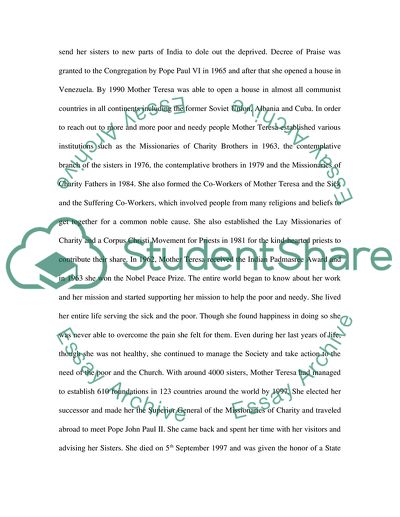Cite this document
(“Mother Teresa Essay Example | Topics and Well Written Essays - 2250 words”, n.d.)
Mother Teresa Essay Example | Topics and Well Written Essays - 2250 words. Retrieved from https://studentshare.org/history/1549047-mother-teresa
Mother Teresa Essay Example | Topics and Well Written Essays - 2250 words. Retrieved from https://studentshare.org/history/1549047-mother-teresa
(Mother Teresa Essay Example | Topics and Well Written Essays - 2250 Words)
Mother Teresa Essay Example | Topics and Well Written Essays - 2250 Words. https://studentshare.org/history/1549047-mother-teresa.
Mother Teresa Essay Example | Topics and Well Written Essays - 2250 Words. https://studentshare.org/history/1549047-mother-teresa.
“Mother Teresa Essay Example | Topics and Well Written Essays - 2250 Words”, n.d. https://studentshare.org/history/1549047-mother-teresa.


